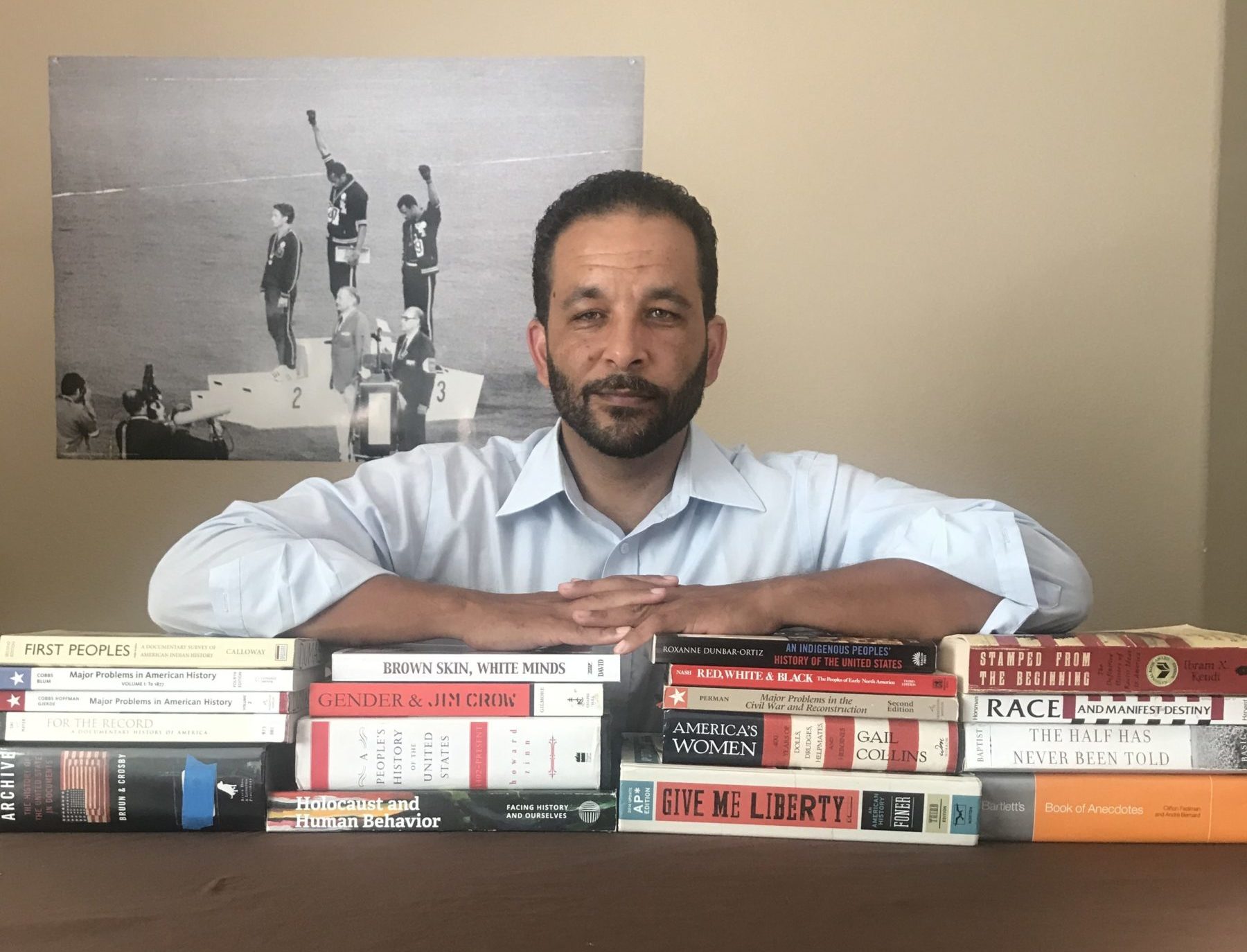
“We are always telling our students to do what’s right and be truthful,” Don Dumas says. “We must do the same when teaching about America’s past, so students can better understand the present.” Photo by Howard Dumas
Don Dumas was teaching students about racism long before there was a Black Lives Matter movement and unprecedented nationwide protests demanding social justice. For the past decade, he has helped students explore how racism is woven throughout America’s entire history — and how painful events of the past continue to shape our world.
Teaching through a social justice lens made Dumas one of five 2019-20 San Diego County Teachers of the Year. Sweetwater Education Association President Julie Walker describes the SEA member as a “teacher leader” who encourages colleagues to go beyond the textbook.
“I want students to know they can make things happen, like other people have done throughout history. That’s why I teach the way I do.”
“Textbooks are not designed to tell us the truth about what happened in the past,” says Dumas, a teacher at Bonita Vista High School in Chula Vista. “Textbooks are designed to make us feel nostalgia for an American past that hasn’t existed for everyone, although it may have existed for some.”
Books such as The Half Has Never Been Told: Slavery and the Making of American Capitalism by Edward E. Baptist and Race and Manifest Destiny by Reginald Horsman are used in his classes to “fill in the gaps” in state-adopted textbooks. Students learn, for example, that the main reason for the Mexican-American War was not a border dispute or to avenge the killing of 16 American soldiers, as students have been traditionally taught. Instead, the U.S. wanted to expand its cotton empire and slave power, says Dumas. As for the Civil War, students learn that Abraham Lincoln espoused white supremacist views as a congressman running for Senate, and that slaves played an enormous role in freeing themselves.
“I want students to understand that slaves played the biggest roles in grabbing their freedom, and that my students, too, have the power to shape their environment. I want them to know they can make things happen, like other people have done throughout history. That’s why I teach the way I do.”
“He changed my view on almost everything I knew about historical events,” says Helaina Saka, a senior. “He connected the dots about what really happened. It was my favorite class last year.”
“Mr. Dumas is a great teacher,” says Tabari Taper Rodriguez, currently in Dumas’ AP history class. “He likes students to share their ideas and debate, because it shows we are actually learning. Nobody is disrespected, and everybody is heard in his classroom.”
While growing up in nearby Imperial Beach, Dumas seldom felt heard in school. As a biracial child of a Black father and white mother, he felt like an outsider. He could not relate to the curriculum. He became rebellious.
“I made mistakes, went to juvenile hall, and was not on the college track. A lot of it had to do with the fact that I felt invisible.”
After high school, he worked as a mailroom clerk. A co-worker let him borrow A People’s History of the United States by Howard Zinn, which presents alternative views of historical events. And the rest, as they say, is history. He enrolled in community college, transferred to San Diego State and became a history teacher.
“That book told the history of marginalized groups,” says Dumas, a child of two dropouts who was raised in poverty. “It validated what I had been unable to verbalize: The political and economic systems that operate in this country are exploitive. I was completely enthralled. My friend never got his book back.”
Dumas’ animated in-person teaching style may be a little different on Zoom, but classroom debates are still happening. Students have compared recent protests to the Boston Tea Party, whose participants took to the streets and destroyed property. On Sept. 23, the day that police officers were charged with “wanton endangerment” for the fatal shooting of Breonna Taylor, students learned about what occurred on Sept. 23 over six decades ago: Two white men were acquitted in a Mississippi courtroom for the murder of Emmett Till, a 14-year-old Black child who was accused of flirting with a white woman.
Students are learning history, but also experiencing history — and should be excited about that, says Dumas. He tells them that hundreds of years from now, people may read their social media posts to better understand about living in a pandemic accompanied by racial unrest.
Parents occasionally complain that showcasing the dirty truths of American history is unpatriotic. Dumas takes that in stride and is supported by his district.
“I am challenging the dominant historical narrative. Many of my colleagues would also like to also do that, but they are afraid of getting complaints. I encourage history teachers to be courageous. We are always telling our students to do what’s right and be truthful. We must do the same when teaching about America’s past, so students can better understand the present.”